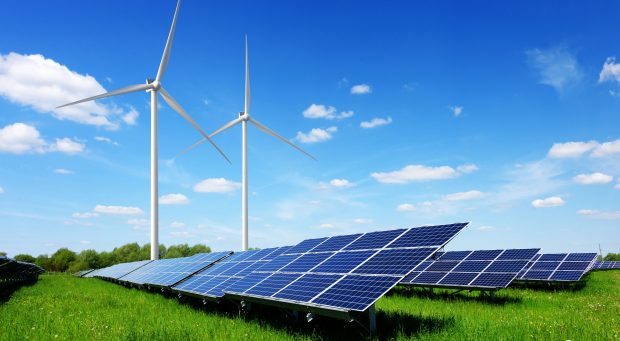Electricity is a necessity in every part of the world. However, most conventional energy sources used to make electricity are non-renewable.
Traditionally, energy is derived from the combustion of fossil fuels such as fuel and coal. Besides, fossil fuels, nuclear power, and biomass energy are also employed to generate electricity.
The combustion of such fossil fuels causes tremendous harm to the environment, and the sources are eventually likely to run out since they are non-renewable sources of energy. Such energy sources produce greenhouse gasses that ultimately raise the temperature worldwide, leading to climate change.

On the other hand, renewable energy sources like solar energy, hydropower, wind energy and biomass can produce clean electricity without posing a threat to the environment.
Clean energy sources produce neither Co2 nor any other greenhouse gasses that typically harm the environment. Moreover, using the electricity produced from sustainable energy sources is cheaper than using electricity generated from non-renewable sources.
5 Renewable sources of energy
1. Solar Power
It is a cheap and effective method of converting the sun’s energy into usable electricity. Currently, the energy harvested from the sun is the largest form of sustainable energy available to humanity, and approximately 570TWh of solar energy is produced throughout the world.
This is possible because of the photovoltaic panels that convert the sunlight into energy. The use of solar energy has led the transition from non-renewable sources to more sustainable sources of energy.
Solar energy has become a force for companies to bring change to their operations owing to low operational costs, low carbon emissions, and adequate power production capacity of the energy system.
In addition, investments in solar power are increasing as governments worldwide are incentivizing people by offering a variety of rebates and monetary benefits.
This energy source is gradually becoming the most extensively used clean energy source due to continuous development and investment.
Moreover, batteries and advanced innovation in panel roofing technologies have made it more convenient for people to adopt solar energy systems at home.
2. Hydropower
Hydropower is among the oldest sources of renewable power in use, and it has evolved to include a variety of hydro-based energy production technologies.
The Hoover Dam in the USA is a marvel of hydroelectric power. Electricity is produced by controlling the flow of water through the dams.
Hydropower is the world’s most significant source of sustainable energy, accounting for sixteen percent of total global energy output.
Besides dams, tidal and wave power is also employed to produce electricity, and the use of various methods makes hydropower highly versatile.
As per an estimate, hydropower generated 4800 trillion watt-hours of electricity, and remains one of the mainstream forms of sustainable energy.
3. Wind power
Wind power is another form of renewable energy employed to produce electricity for a long time. For instance, windmills were earlier used to grind grain and pump water from the streams, but now they are being used in electricity generation.
Windmills have large blades, and can use the kinetic energy created by the wind to generate electricity.
Windmills are generally installed in vast, open areas that are exposed to higher winds. The better the wind conditions are, the more electricity they can produce.
Recently, 600MWh of electricity was generated by wind turbines, and the number is expected to triple in the coming years.
Wind Turbines are especially a boon for coastal communities as they can be installed on offshore lands to provide electricity for remote areas in the coastal communities.
4. Geothermal
Geothermal energy harnesses the heat generated naturally within the core of the Earth and uses it to generate electricity. Since its inception in 1913, geothermal energy sources have become an integral part of the power grids of several countries such as New Zealand, Ice Land, and El Salvador.
Currently, there is only 14,500MWh of installed geothermal capacity globally, but it is expected to grow to contribute 3.5 percent to the total global electricity demand by 2050.
5. Bioenergy
Bioenergy is generated from a wide variety of biodegradable materials such as wood pallets and food waste. Bioenergy has been a cornerstone of sustainable development, whether through the burning of biological resources for energy or the use of liquid biofuels to power vehicles.
Bioenergy is especially popular in countries with growing agricultural sectors as it can provide for different energy needs. Bioenergy has also been a cornerstone for development in Africa and other underdeveloped regions to transition from fossil fuels.
As an electricity provider, biomass energy has a global installed capacity of 1300GW.
Benefits of using Renewable energy sources
1. Renewable energy does not generate any emissions
The electricity generated through fossil fuels contributes 27% of all the greenhouse emissions in the United States. This figure includes carbon dioxide and demands other pollutants like methane, nitrous oxide, and fluorinated gasses.
For instance, a coal power plant emits roughly 35 ounces of CO2 to produce a kilowatt-hour of electricity. On the other hand, the use of renewable energy sources generates no emissions or greenhouse gases.
2. Reduces harmful air pollutants
The gasses released during the combustion of fossil fuels harm the environment and cause harm to humans. Air pollutants are also the leading cause of depleting the ozone layer, protecting the environment from harmful ultraviolet rays.
The trapping of polluted air in the stratospheric ozone can cause coughing, throat irritation, airway inflammation, and reduced lung infection.
3. Saves Money
Renewable energy sources are not only good for the environment but help save money as well. With the rapid growth in the renewable energy sector, solar and wind power are the most affordable ways to generate electricity. Sustainable energy sources thrive in areas where the weather conditions are favorable.
For instance, in the United Arab Emirates, a new sun farm generates electricity using photovoltaic cells at just 1.35 cents per kilowatt-hours.
When compared to traditional combustion power plants, renewable energy plants also need less maintenance to function. Also, the sources of renewable energy are freely available in infinite amounts.
To conclude, the various types of renewable energy sources save the environment while proving to be an effective and reliable energy source. As we aim to achieve carbon neutrality, sustainable energy sources are the need of the hour.



